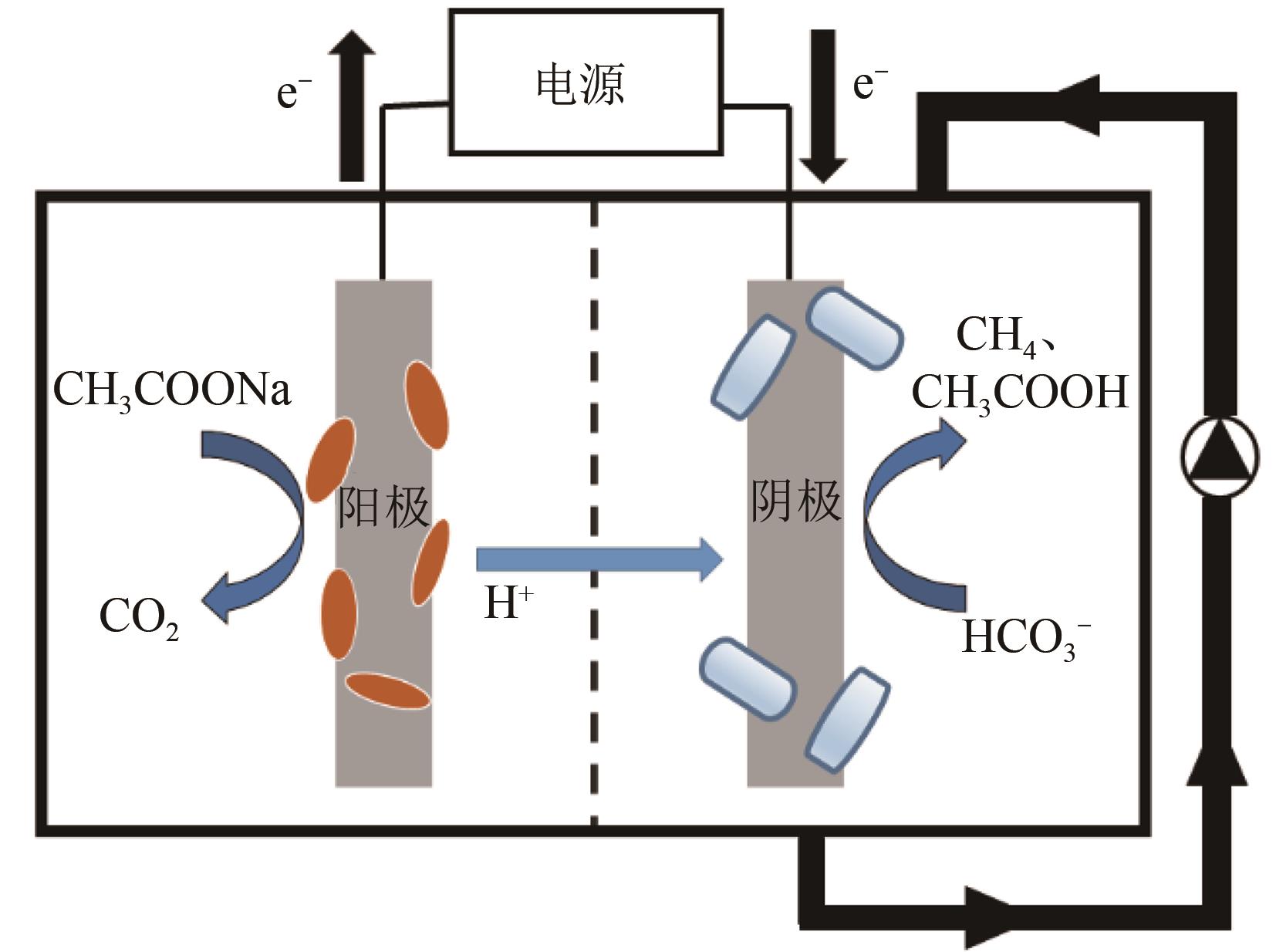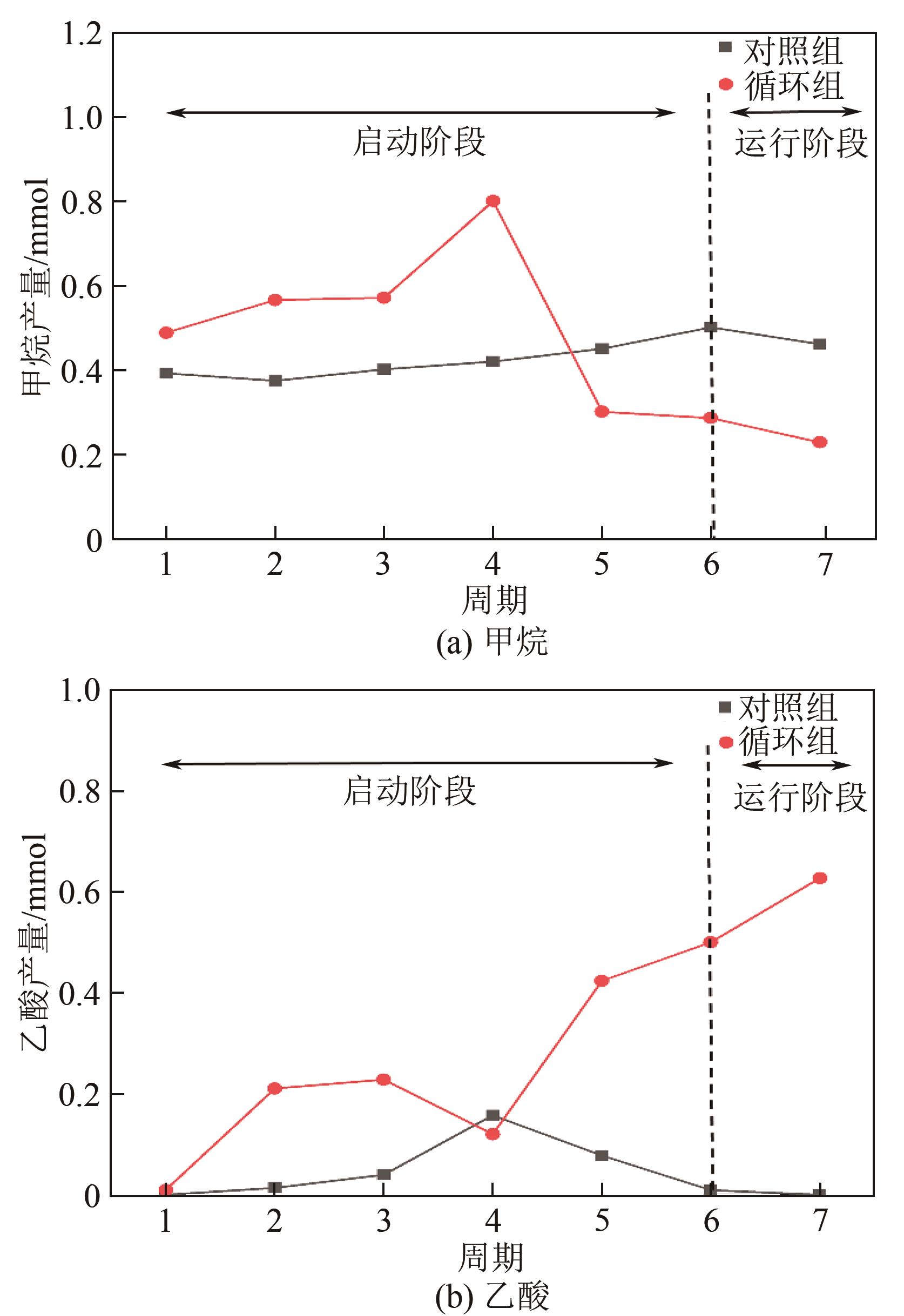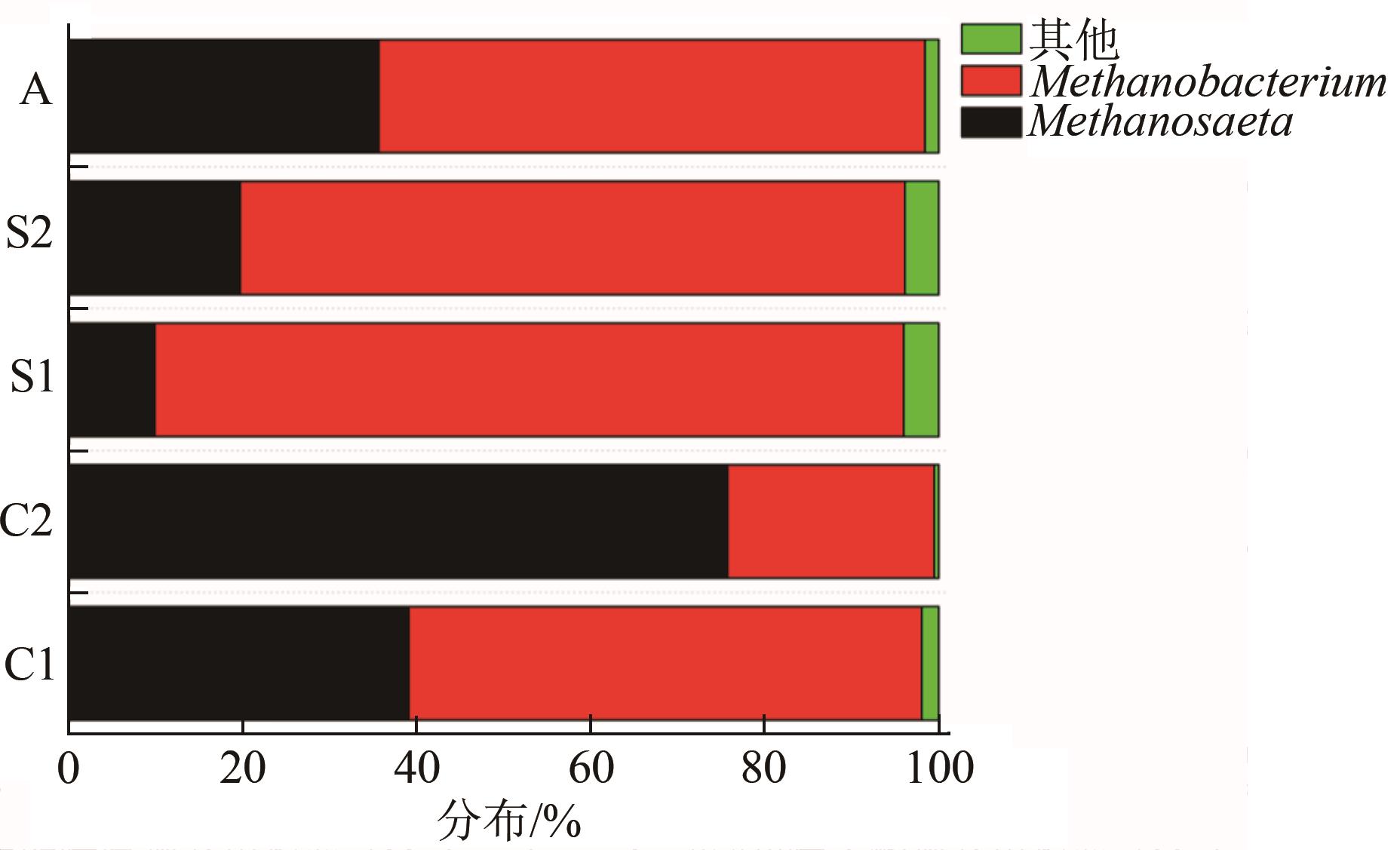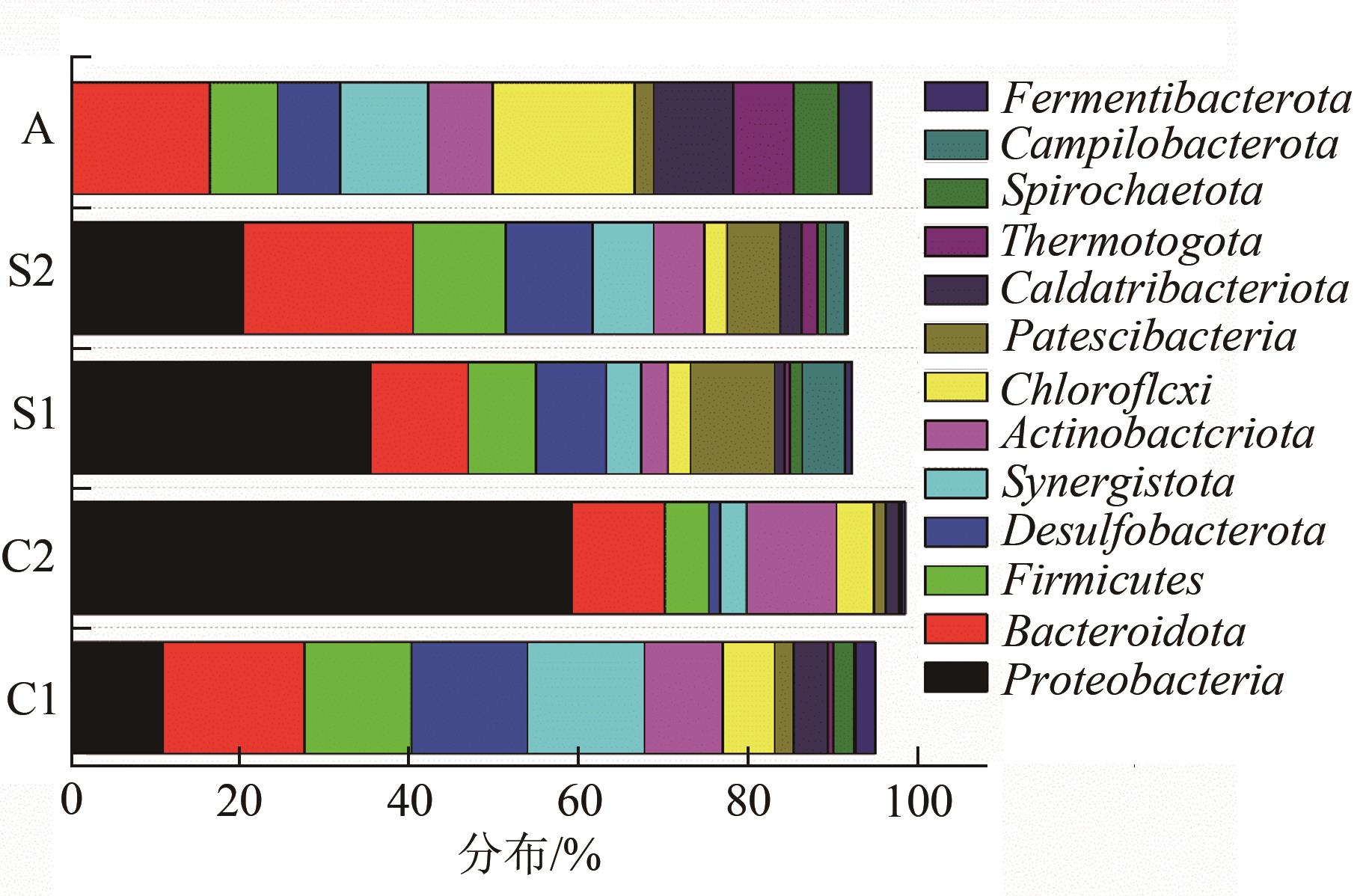| 1 |
郑韶娟, 陆雪琴, 张衷译, 等. 微生物电解池: 生物电催化辅助CO2甲烷化技术[J]. 环境化学, 2019, 38(7): 1666-1674.
|
|
ZHENG Shaojuan, LU Xueqin, ZHANG Zhongyi, et al. Microbial electrolysis cell (MEC): a new platform for CO2 bioelectromethanogenesis assisted by bioelectrocatalysis[J]. Environmental Chemistry, 2019, 38(7): 1666-1674.
|
| 2 |
孙超颖, 李英杰, 闫宪尧, 等. 钙循环捕集CO2后CaO的水合/脱水热化学储热性能[J]. 化工进展, 2020, 39(5): 1734-1743.
|
|
SUN Chaoying, LI Yingjie, YAN Xianyao, et al. Hydration/dehydration thermochemical heat storage performance of CaO from CO2 capture cycles[J]. Chemical Industry and Engineering Progress, 2020, 39(5): 1734-1743.
|
| 3 |
陈凯宏, 李红茹, 何良年. CO2活化和转化策略研究进展[J]. 有机化学, 2020, 40(8): 2195-2207.
|
|
CHEN Kaihong, LI Hongru, HE Liangnian. Advance and prospective on CO2 activation and transformation strategy[J]. Chinese Journal of Organic Chemistry, 2020, 40(8): 2195-2207.
|
| 4 |
田华, 孙瑞, 宋春风, 等. 耦合膜分离的新型CO2低温捕集系统性能优化[J]. 化工进展, 2020, 39(7): 2884-2892.
|
|
TIAN Hua, SUN Rui, SONG Chunfeng, et al. Optimization of novel hybrid cryogenic CO2 capture process with membrane separation[J]. Chemical Industry and Engineering Progress, 2020, 39(7): 2884-2892.
|
| 5 |
DEL PILAR ANZOLA ROJAS M, MATEOS R, SOTRES A, et al. Microbial electrosynthesis (MES) from CO2 is resilient to fluctuations in renewable energy supply[J]. Energy Conversion and Management, 2018, 177: 272-279.
|
| 6 |
CHENG S, XING D, CALL D F, et al. Direct biological conversion of electrical current into methane by electromethanogenesis[J]. Environmental Science & Technology, 2009, 43(10): 3953-3958.
|
| 7 |
LI J, LI Z, XIAO S, et al. Startup cathode potentials determine electron transfer behaviours of biocathodes catalysing CO2 reduction to CH4 in microbial electrosynthesis[J]. Journal of CO2 Utilization, 2020, 35: 169-175.
|
| 8 |
王博, 高冠道, 李凤祥, 等. 微生物电解池应用研究进展[J]. 化工进展, 2017, 36(3): 1084-1092.
|
|
WANG Bo, GAO Guandao, LI Fengxiang, et al. Advance in application of microbial electrolysis cells[J]. Chemical Industry and Engineering Progress, 2017, 36(3): 1084-1092.
|
| 9 |
毛政中, 孙怡, 黄志鹏, 等. 微生物电解池产甲烷技术研究进展[J]. 化工学报, 2019, 70(7): 2411-2425.
|
|
MAO Zhengzhong, SUN Yi, HUANG Zhipeng, et al. Progress of research on methanogenic microbial electrolysis cell[J]. CIESC Journal, 2019, 70(7): 2411-2425.
|
| 10 |
CRISTIANI L, ZEPPILLI M, PORCU C, et al. Ammonium recovery and biogas upgrading in a tubular micro-pilot microbial electrolysis cell (MEC)[J]. Molecules, 2020, 25(12): 2723.
|
| 11 |
SUN M, ZHAI L F, MU Y, et al. Bioelectrochemical element conversion reactions towards generation of energy and value-added chemicals[J]. Progress in Energy and Combustion Science, 2020, 77: 100814.
|
| 12 |
JIANG Y, SU M, ZHANG Y, et al. Bioelectrochemical systems for simultaneously production of methane and acetate from carbon dioxide at relatively high rate[J]. International Journal of Hydrogen Energy, 2013, 38(8): 3497-3502.
|
| 13 |
LIU C Q, YUAN X, GU Y Y, et al. Enhancement of bioelectrochemical CO2 reduction with a carbon brush electrode via direct electron transfer[J]. ACS Sustainable Chemistry & Engineering, 2020, 8(30): 11368-11375.
|
| 14 |
WANG H C, CUI D, YANG L H, et al. Increasing the bio-electrochemical system performance in azo dye wastewater treatment: reduced electrode spacing for improved hydrodynamics[J]. Bioresource Technology, 2017, 245: 962-969.
|
| 15 |
CHOU H H, HUANG J S, JHENG J H, et al. Influencing effect of intra-granule mass transfer in expanded granular sludge-bed reactors treating an inhibitory substrate[J]. Bioresource Technology, 2008, 99(9): 3403-3410.
|
| 16 |
GAO L, LIU W Z, CUI M H, et al. Enhanced methane production in an up-flow microbial electrolysis assisted reactors: hydrodynamics characteristics and electron balance under different spatial distributions of bioelectrodes[J]. Water Research, 2021, 191: 116813.
|
| 17 |
GAO L, THANGAVEL S, GUO Z C, et al. Hydrodynamics analysis for an upflow integrated anaerobic digestion reactor with microbial electrolysis under different hydraulic retention times: effect of bioelectrode spatial distribution on functional communities involved in methane production and organic removal[J]. ACS Sustainable Chemistry & Engineering, 2020, 8(1): 190-199.
|
| 18 |
TAVARES C R G, SANT'ANNA G L, CAPDEVILLE B. The effect of air superficial velocity on biofilm accumulation in a three-phase fluidized-bed reactor[J]. Water Research, 1995, 29(10): 2293-2298.
|
| 19 |
黄如一, 蒋辉霞, 吴进, 等. 水力搅拌加速沼气工程启动的研究(Ⅰ)—实验部分[J]. 中国沼气, 2020, 38(4): 45-50.
|
|
HUANG Ruyi, JIANG Huixia, WU Jin, et al. Study on hydraulic agitation to accelerate the start-up of biogas project Ⅰ: Experimental part[J]. China Biogas, 2020, 38(4): 45-50.
|
| 20 |
ZEPPILLI M, VILLANO M, MAJONE M. Microbial electrolysis cell to enhance energy recovery from wastewater treatment[J]. Chemical Engineering Transactions, 2015, 43: 2341-2346.
|
| 21 |
KUNDU K, BERGMANN I, KLOCKE M, et al. Influence of hydrodynamic shear on performance and microbial community structure of a hybrid anaerobic reactor[J]. Journal of Chemical Technology & Biotechnology, 2014, 89(3): 462-470.
|
| 22 |
BUZZINI A P, SAKAMOTO I K, VARESCHE M B, et al. Evaluation of the microbial diversity in an UASB reactor treating wastewater from an unbleached pulp plant[J]. Process Biochemistry, 2006, 41(1): 168-176.
|
| 23 |
VAN EERTEN-JANSEN M C A A, JANSEN N C, PLUGGE C M, et al. Analysis of the mechanisms of bioelectrochemical methane production by mixed cultures[J]. Journal of Chemical Technology & Biotechnology, 2015, 90(5): 963-970.
|
| 24 |
ZHOU H H, XING D F, XU M Y, et al. Biogas upgrading and energy storage via electromethanogenesis using intact anaerobic granular sludge as biocathode[J]. Applied Energy, 2020, 269: 115101.
|
| 25 |
ZHENG S, LIU F, WANG B, et al. Methanobacterium capable of direct interspecies electron transfer[J]. Environmental Science & Technology, 2020, 54(23): 15347-15354.
|
| 26 |
ROTARU A E, SHRESTHA P M, LIU F, et al. Direct interspecies electron transfer between Geobacter metallireducens and Methanosarcina barkeri [J]. Appl Environ Microbiol, 2014, 80(15): 4599-4605.
|
| 27 |
YANG H Y, BAO B L, LIU J, et al. Temperature dependence of bioelectrochemical CO2 conversion and methane production with a mixed-culture biocathode[J]. Bioelectrochemistry, 2018, 119: 180-188.
|
| 28 |
HOFFMANN R A, GARCIA M L, VESKIVAR M, et al. Effect of shear on performance and microbial ecology of continuously stirred anaerobic digesters treating animal manure[J]. Biotechnology and Bioengineering, 2008, 100(1): 38-48.
|
| 29 |
KOBAYASHI T, YASUDA D, LI Y Y, et al. Characterization of start-up performance and archaeal community shifts during anaerobic self-degradation of waste-activated sludge[J]. Bioresource Technology, 2009, 100(21): 4981-4988.
|
| 30 |
GUO J H, PENG Y Z, NI B J, et al. Dissecting microbial community structure and methane-producing pathways of a full-scale anaerobic reactor digesting activated sludge from wastewater treatment by metagenomic sequencing[J]. Microbial Cell Factories, 2015, 14(1): 1-11.
|
| 31 |
ZHANG J B, WU P X, HAO B, et al. Heterotrophic nitrification and aerobic denitrification by the bacterium Pseudomonas stutzeri YZN-001[J]. Bioresource Technology, 2011, 102(21): 9866-9869.
|
| 32 |
LU Y, LI S N, SHA M, et al. Cascading effects caused by fenoxycarb in freshwater systems dominated by Daphnia carinata and Dolerocypris sinensis [J]. Ecotoxicology and Environmental Safety, 2020, 203: 111022.
|
| 33 |
LI Y, XU H P, YI X L, et al. Study of two-phase anaerobic digestion of corn stover: focusing on the conversion of volatile fatty acids and microbial characteristics in UASB reactor[J]. Industrial Crops and Products, 2021, 160: 113097.
|
| 34 |
DU Q, MU Q H, WU G X. Metagenomic and bioanalytical insights into quorum sensing of methanogens in anaerobic digestion systems with or without the addition of conductive filter[J]. Science of the Total Environment, 2021, 763: 144509.
|
| 35 |
LEE S Y, OH Y K, LEE S, et al. Recent developments and key barriers to microbial CO2 electrobiorefinery[J]. Bioresource Technology, 2021, 320: 124350.
|
| 36 |
RABUS R, VENCESLAU S S, WÖHLBRAND L, et al. A post-genomic view of the ecophysiology, catabolism and biotechnological relevance of sulphate-reducing prokaryotes[J]. Advances in Microbial Physiology, 2015, 66: 55-321.
|
| 37 |
JIA X, LI M X, WANG Y, et al. Enhancement of hydrogen production and energy recovery through electro-fermentation from the dark fermentation effluent of food waste[J]. Environmental Science and Ecotechnology, 2020, 1: 100006.
|
| 38 |
LIU C Q, SUN D Z, ZHAO Z Q, et al. Methanothrix enhances biogas upgrading in microbial electrolysis cell via direct electron transfer[J]. Bioresource Technology, 2019, 291: 121877.
|
| 39 |
BRYANT M P, CAMPBELL L L, REDDY C A, et al. Growth of desulfovibrio in lactate or ethanol media low in sulfate in association with H2-utilizing methanogenic bacteria[J]. Applied and Environmental Microbiology, 1977, 33(5): 1162-1169.
|
 ), 贾璇2, 王勇1, 亓雪娇1, 赵玉娇2, 李鸣晓1(
), 贾璇2, 王勇1, 亓雪娇1, 赵玉娇2, 李鸣晓1( )
)
 ), JIA Xuan2, WANG Yong1, QI Xuejiao1, ZHAO Yujiao2, LI Mingxiao1(
), JIA Xuan2, WANG Yong1, QI Xuejiao1, ZHAO Yujiao2, LI Mingxiao1( )
)





